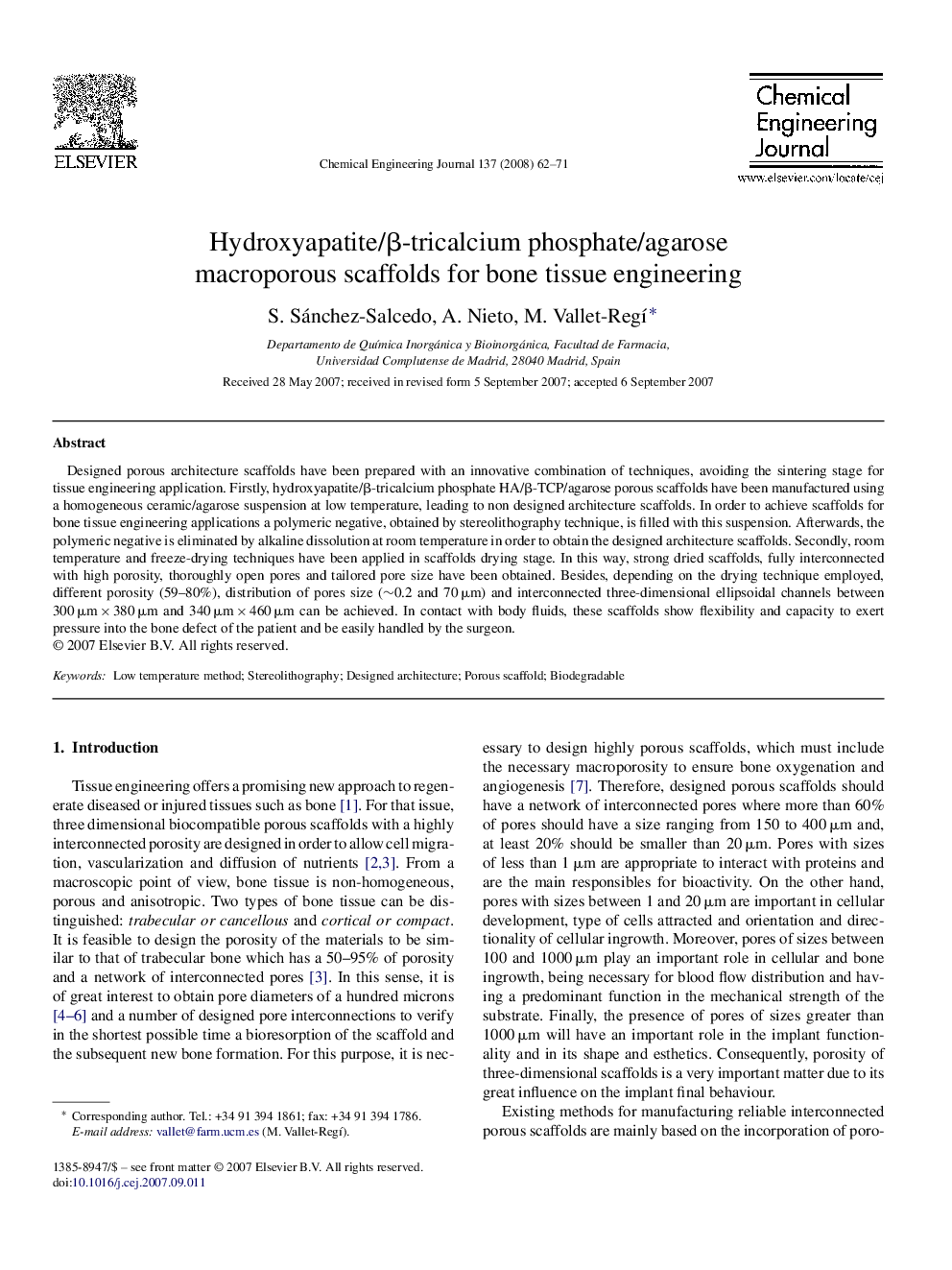| Article ID | Journal | Published Year | Pages | File Type |
|---|---|---|---|---|
| 154062 | Chemical Engineering Journal | 2008 | 10 Pages |
Designed porous architecture scaffolds have been prepared with an innovative combination of techniques, avoiding the sintering stage for tissue engineering application. Firstly, hydroxyapatite/β-tricalcium phosphate HA/β-TCP/agarose porous scaffolds have been manufactured using a homogeneous ceramic/agarose suspension at low temperature, leading to non designed architecture scaffolds. In order to achieve scaffolds for bone tissue engineering applications a polymeric negative, obtained by stereolithography technique, is filled with this suspension. Afterwards, the polymeric negative is eliminated by alkaline dissolution at room temperature in order to obtain the designed architecture scaffolds. Secondly, room temperature and freeze-drying techniques have been applied in scaffolds drying stage. In this way, strong dried scaffolds, fully interconnected with high porosity, thoroughly open pores and tailored pore size have been obtained. Besides, depending on the drying technique employed, different porosity (59–80%), distribution of pores size (∼0.2 and 70 μm) and interconnected three-dimensional ellipsoidal channels between 300 μm × 380 μm and 340 μm × 460 μm can be achieved. In contact with body fluids, these scaffolds show flexibility and capacity to exert pressure into the bone defect of the patient and be easily handled by the surgeon.
